Bracey’s Windpump at Martham
The windmill was actually a windpump used for draining the marshes. It was built in 1908 by Edwin William Daniel England (1854-1933) from a family of millwrights better known as Englands of Ludham that had existed for generations*.
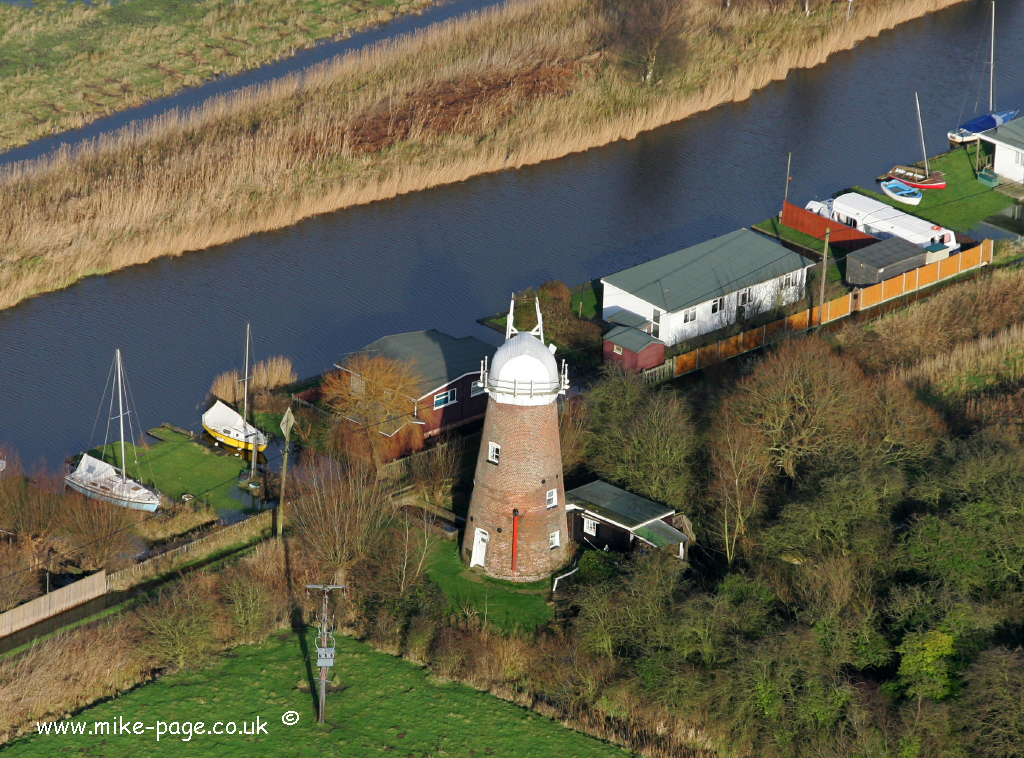
By 1908 William James Bracey (1847-1922) had become wealthy by expanding his building and brick making business and this included clay extraction and brickmaking at a site next to Martham Boat Dyke Staithe at what was later flooded and has become Martham fishing pits. With his son William (1870-1949) the father & son business expanded still further into blackcurrant production and dairy farming and at this time they owned the majority of the land at Heigham Holmes. It was these interests that saw them both included as Commissioners for Drainage who were responsible for local marsh drainage. Their names appear on a plaque that can still be seen on the mill that was built from bricks made by their firm. Norfolk Heritage says the mill stands on a site that was once a brickworks with Bracey’s blackcurrant bushes that have since gone wild. Hence the informal name Bracey’s Mill. Some of those working as Commissioners may not have done it for entirely altruistic reasons as they owned large tracks of nearby land that benefited from flood protection.
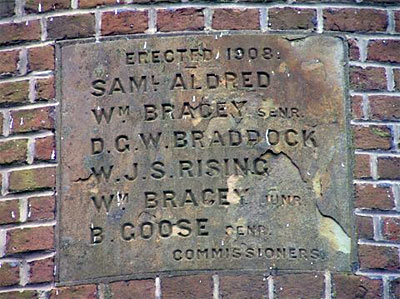
Samuel Aldred – An auctioneer and land agent.
Daniel George Wilson Braddock (1861-1929) was a farmer of Martham & West Somerton.
William James Sutfield Rising (1863-1916)- Reverend, from the Rising land-owning family dynasty of Martham & Somerton.
Benjamin Goose (1868-1967) – farmer of Rectory Farm & Rose Farm, Cess, Martham.
William Bracey Snr & Jnr – as above.
The mill was built on land that had been in the ownership of the Commissioners of Drainage as far back as 1842 when it was listed in the Martham Tithe Award under plot No 481 as a ‘reed rand’ (ridge made of reeds) and possibly No 482 described simply as ‘wall’. This is the Tithe Map showing the plots and the Award listing.

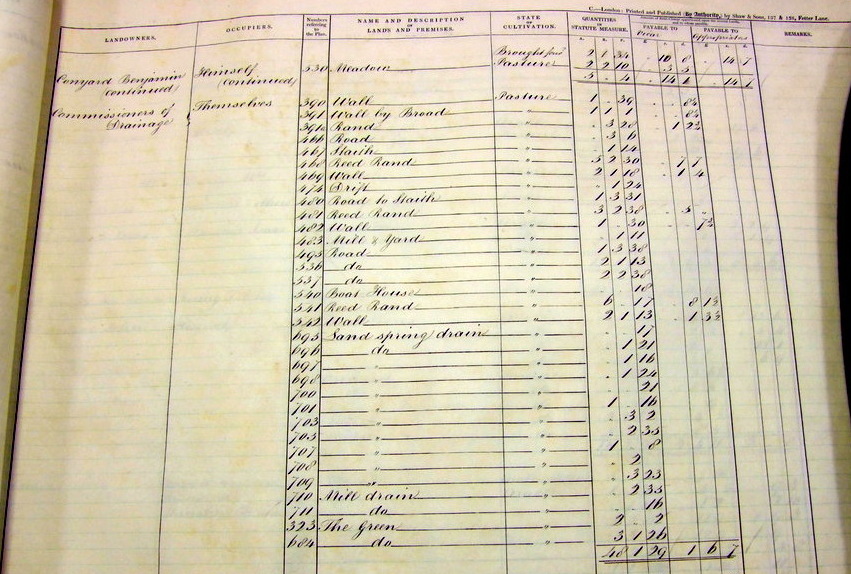
The mill is a four-storey brick construction with an upright shaft and a crown wheel which has survived and it drove a turbine pump. It had a boat shaped cap that held a 10 bladed fantail and a gallery. The pumping system was powered by four double shuttered sails.
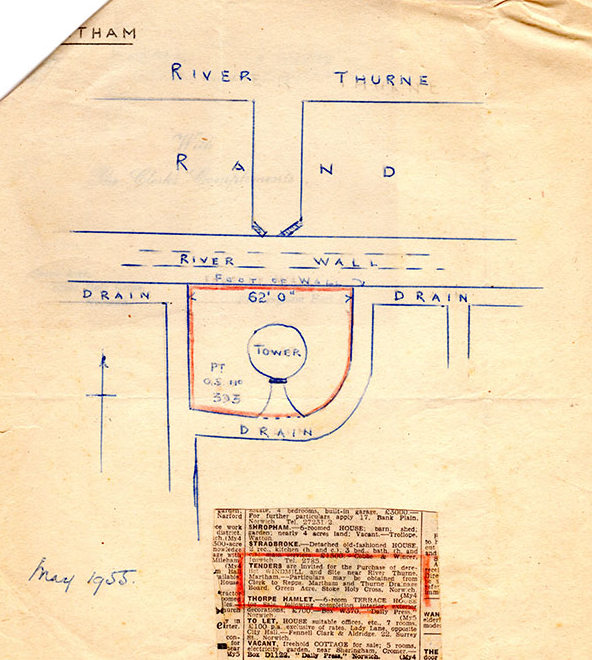
The mill had a channel for a scoop wheel which unusually went through the centre of the tower, so that the wheel must have been inside the mill itself. Mill enthusiast Bob Morse made a sketch of the mill scoop wheel position in 1955 when he must have visited at the time the mill was put up for sale. His sketch is shown here.
It was fully operative until 1936 when a severe storm damaged the sails. By that time there was a more modern pump draining the marshes so it was not worth repairing the sails and was shown on the OS map of 1938 as disused.

In the early 1950s the Mill was converted into residential use and is now (2020) let as a holiday home. The pump was in a somewhat derelict state when the Reverend Hugh Blackburne bought it in 1955 for £550 for a summer residence for sailing holidays. At that time there was not a path along the riverbank or water or electricity connected to the property.
In 1973 the wind pump was sold to Frank Dobson for £13,000 and on 4th December 1987 the Mill was given Grade II Listed Building status (No 1372909).
The mill has now been sensitively renovated so as not to detract from its original purpose but still has all modern facilities. The ground floor has an open plan living area fashioned around the original wooden shaft and cog wheel.
In March 2013 the Mill was advertised for sale by Watersides of Potter Heigham for £230,000.
There is a trigonometrical point at the property which was checked in 2000. Trig points were fixed surveying points that were built by the Ordnance Survey to map the contours of the land. They were used to measure angles related to other trig points which could then be used to accurately measure distances between them. They covered the whole of Britain. Nowadays GPS has taken over but they remain an interesting point for hikers.
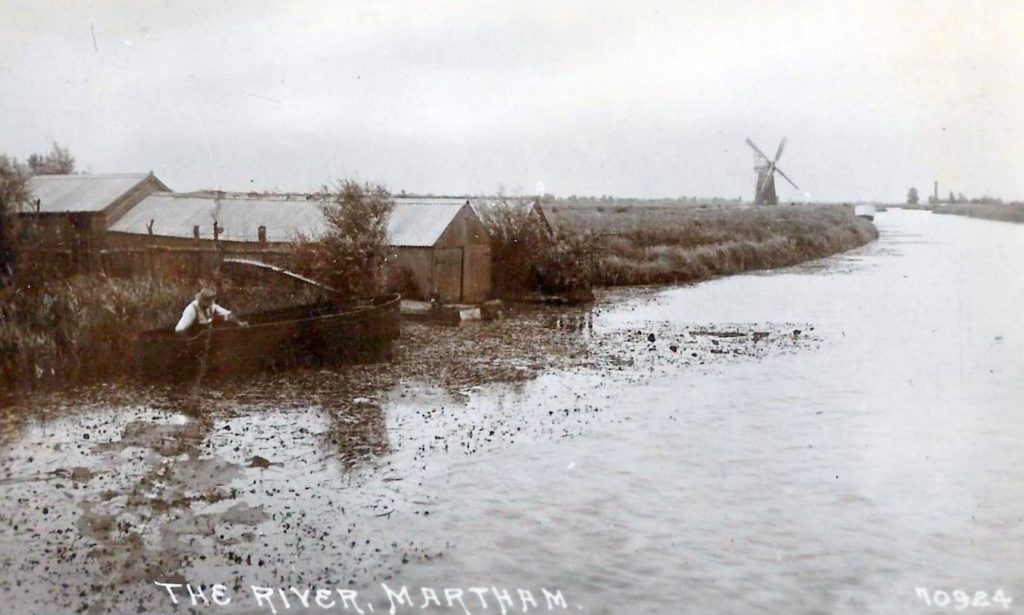
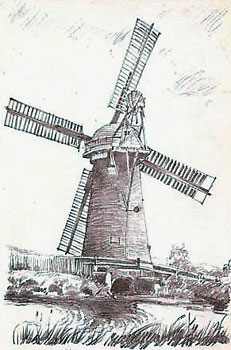
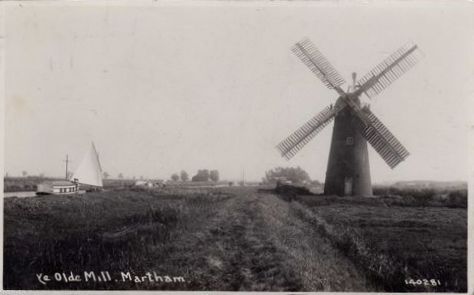
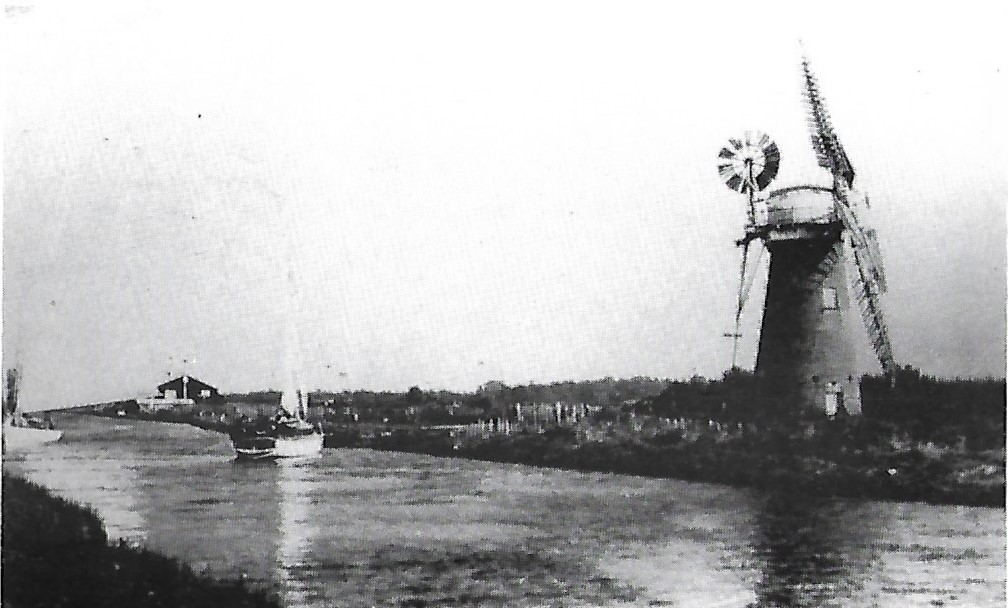
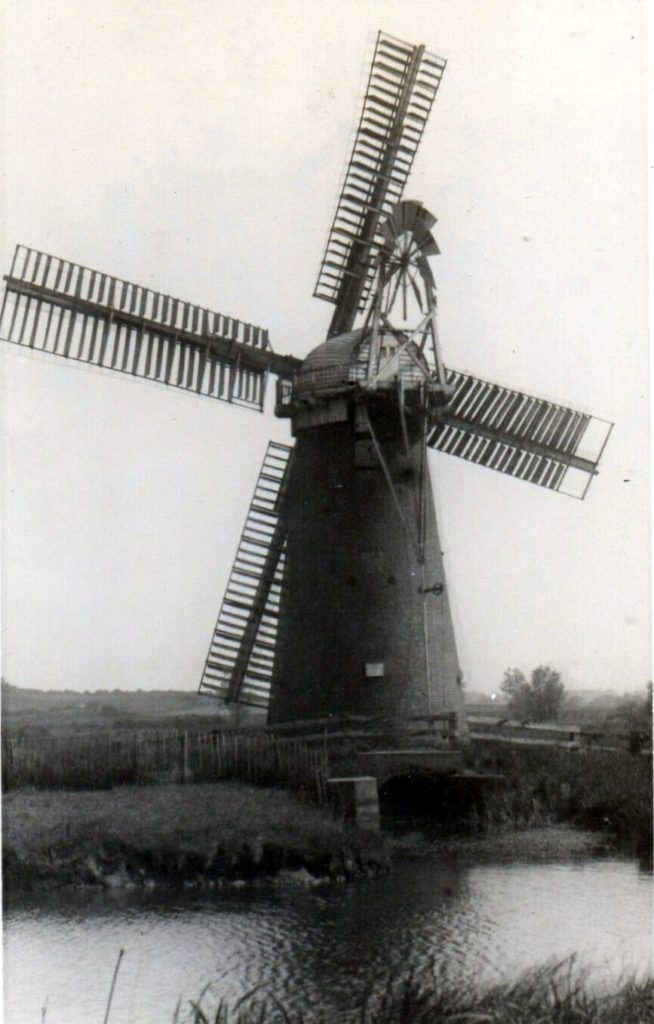
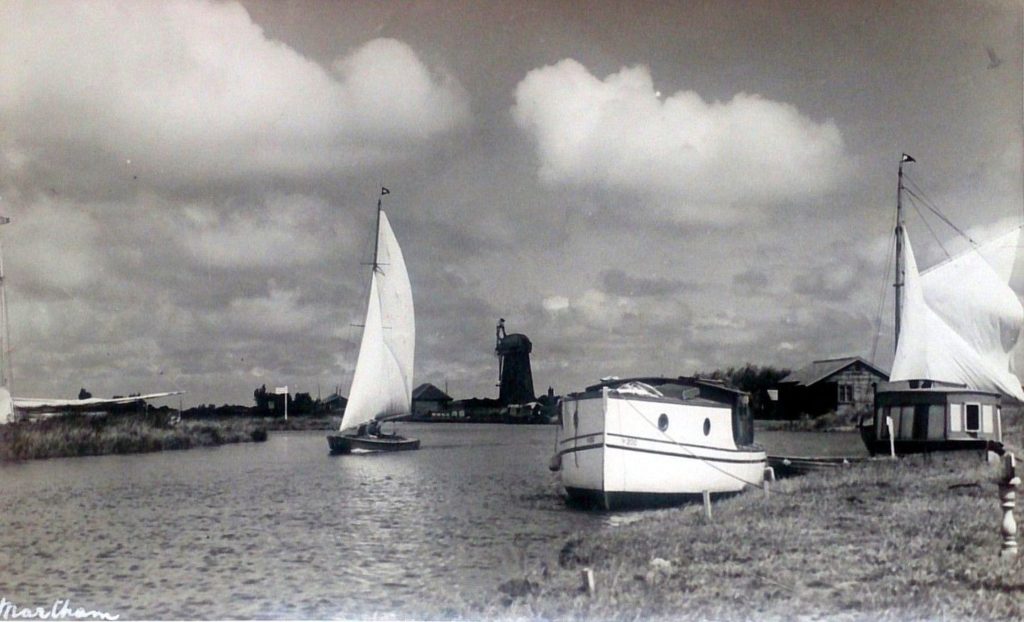
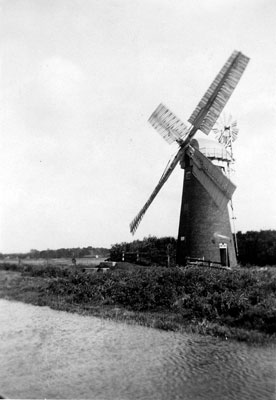
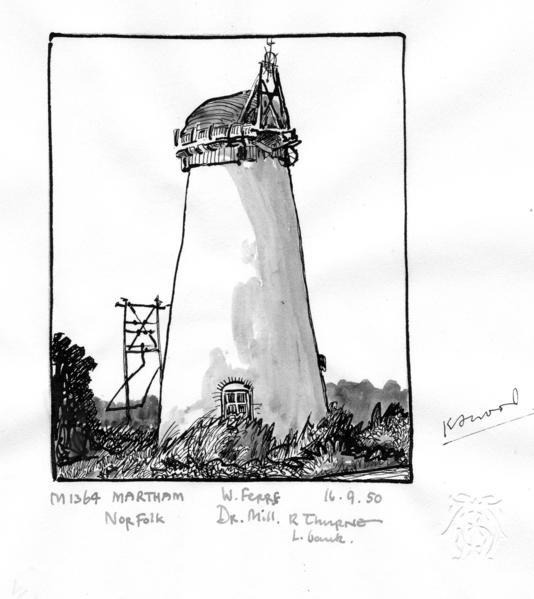
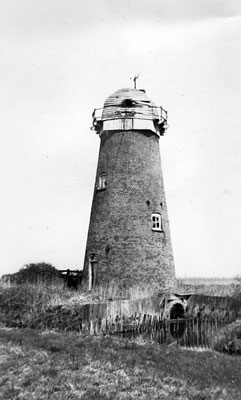
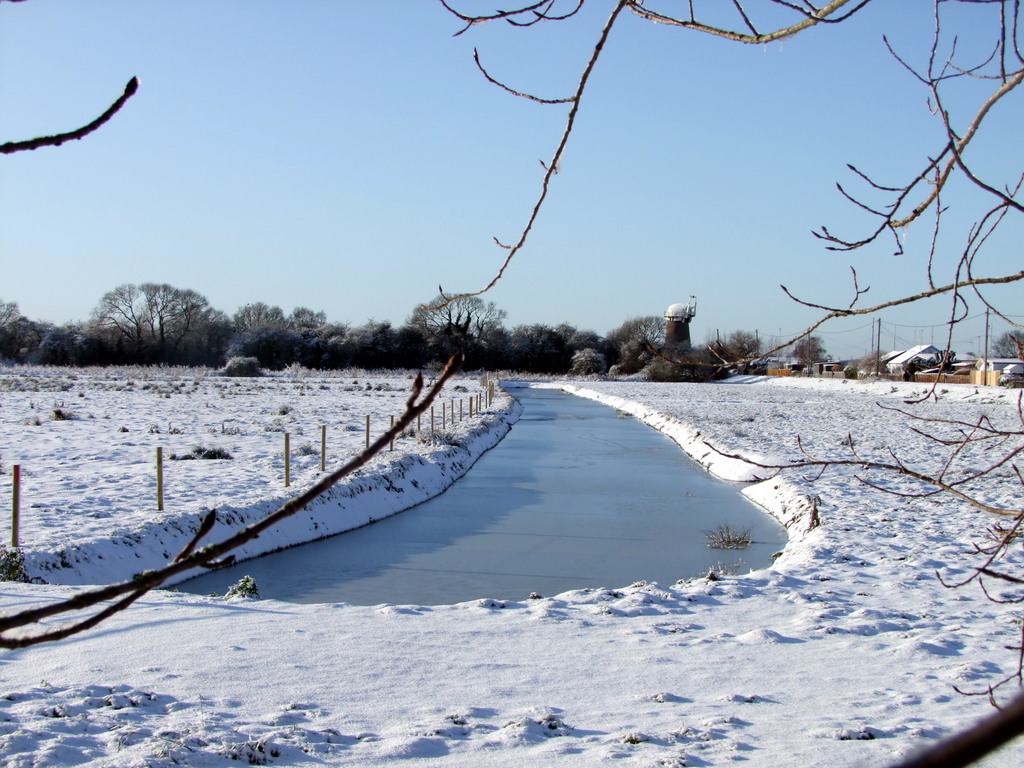
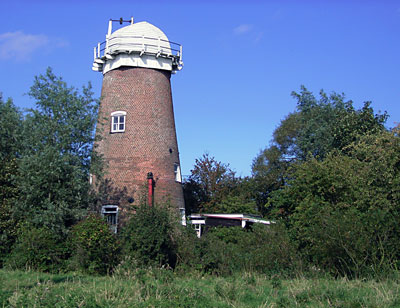
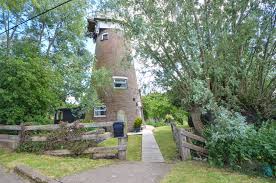
*Windmills and wind pumps were a vital part of the local economy, grinding corn and importantly driving the pumps which drained the marshes. Many of these mills were designed and built by Englands Millwrights of Ludham. The offices and workshops of Englands stood on The Street in 1900 where the garage forecourt is today.
Englands were a well established and respected business building, improving and maintaining mills over a wide area. The family had been in the mill business for generations and were an important local employer. At the peak of their success the business was overseen by Daniel England (1823-1897) who was the inventor of “The Patent Turbine for Fen Drainage”, an important device in the wetlands round Ludham. He was followed by his son Edwin William Daniel England – better known as just Daniel England – who was not only a millwright and engineer but also the landlord of the Kings Arm’s public house at Ludham from 1900, an association that would last until 1922. Englands millwrights’ yard was next door to the pub. Diesel pumps began to have an impact on the mill industry and Englands Millwrights began a decline which would see them close by the Second World War. There was no further need for windmills and pumps and England’s millwright business had ceased trading and the workshops were demolished.
With thanks to Paul Hooper and Jonathan Neville for their help with some of the following information. Also see Jonathan’s excellent website at http://www.norfolkmills.co.uk/